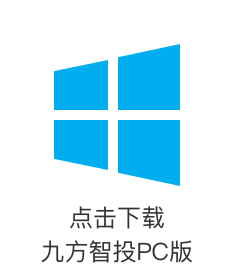1-3Q21 net profit preannounced at Rmb2.17-2.27bn, largely in line
Chenming Paper preannounced 1-3Q21 results: Net profit could rise 102- 111% YoY to Rmb2.17-2.27bn; for 3Q21, net profit could reach Rmb149-249mn (down 56-73% YoY or down 70-82% QoQ), largely in line with our expectation.
Paper prices sharply falling and hurting profit amid soft consumption and weakening support from wood pulp cost. Since 3Q21, inventory of ivory board has increased to highs due to soft domestic consumption and disappointing overall demand. Inventory of printing and writing paper is also high, as competition from Indonesian import increased, select exporters shifted to domestic sales and changing education policies reduced demand for teaching materials. As prices of wood pulp peaked in mid-2021, investors’ confidence further waned and the firm’s ASP of major products sharply declined in 3Q21. Data from umpaper.com shows that sector ASP of ivory board and printing and writing paper fell 30% and 15% QoQ in 3Q21 (though the decline was milder for the firm’s actual ex- factory prices). Producers of printing and writing paper are either making a slim profit or loss-making, and the firm’s per-tonne net profit sharply declined. In addition, spot coal prices rose by over 30% QoQ in 3Q21, and the firm’s power generation cost for its self-owned power plants may have sharply increased. This may also weigh on its 3Q21 profit margin.
Trends to watch
Restriction on industrial production and power consumption helping improve supply and demand balance in peak season; 4Q21 earnings likely to improve QoQ. The firm has a high exposure to self-owned power plants, and its major production facilities are located in provinces with relatively mild pressure for production restrictions such as Shandong and Hubei. Thus, we believe the restriction on power consumption in 2H21 will have limited impact on the firm’s sales volume. Guangdong and Jiangsu have tightened control over energy consumption since September, which has led to production suspension at select papermakers. If domestic control over energy consumption remains tight in 4Q21, we expect sector supply to see sharper-than-expected contraction, which could improve supply and demand balance and earnings in the peak season. We expect paper prices to marginally rebound QoQ as peak season approaches, and the firm’s earnings to improve QoQ in 4Q21.
Control over energy consumption to benefit industry landscape in the medium term. Amid China’s efforts to peak carbon emission and accomplish carbon neutrality, we expect China’s environmental regulations and control over energy consumption to further tighten in the medium term and the approval of new papermaking projects to sharply slow. We think that pressure of supply expansion will be milder than market expectation, and demand for ivory board may rapidly increase amid China’s ban on plastic and imported waste paper. We expect the market potential of ivory board to increase from 12mnt in 2020 to about 20mnt, and sector supply and demand to maintain a relatively tight balance in the medium term. In addition, our surveys show that small papermakers are unlikely to secure industrial land, self-owned power plants and quota for energy consumption for new projects. We think that incremental pulp paper projects will mainly come from leading papermakers. As a result, we expect the industry’s competitive landscape to further improve. We think the firm’s medium-term average earnings and cash flow will significantly improve compared with the last cycle, conducive to driving recovery in average valuations.
Valuation and recommendation
As we revise our assumptions for paper volume and prices, we lower our 2021-2022 net profit forecast 22% and 16% to Rmb2.78bn and Rmb3.07bn. Chenming A-shares are trading at 8.2x and 7.5x 2021-2022e P/E, and H-shares at 3.9x and 3.6x P/E. We maintain an OUTPERFORM rating for the A-shares and H-shares, and trim target prices for the A- shares 9% to Rmb10 (11x and 10x 2021-2022e P/E with 30% upside) and for the H-shares 8% to HK$5.50 (5x and 5x 2021-2022e P/E with 29% upside).
Risks
Sharper-than-expected decline in wood-pulp raw materials; disappointing downstream demand; higher-than-expected supply of imported paper.













